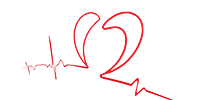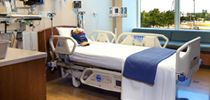What to Expect When Getting a Defibrillator

An implantable cardioverter defibrillator (ICD) is a small device that can save lives by treating dangerous heart rhythms. For individuals at risk of sudden cardiac arrest or other life-threatening arrhythmias, an ICD provides continuous monitoring and delivers a corrective shock if needed. Here’s what you need to know about the conditions it treats, the procedure to implant one, and what recovery looks like when getting a defibrillator.
What is a defibrillator?
A defibrillator is a device that monitors your heart rhythm and delivers an electrical shock when it detects an abnormal or life-threatening arrhythmia. Unlike pacemakers, which regulate slow heart rhythms, defibrillators are designed to intervene during rapid or chaotic rhythms that could lead to cardiac arrest.
Who needs a defibrillator?
Defibrillators are often recommended for individuals with conditions such as:
- Ventricular fibrillation
- Ventricular tachycardia
- Heart failure with reduced ejection fraction
- A history of sudden cardiac arrest
For those with a high risk of these conditions, an ICD offers peace of mind by constantly monitoring the heart and providing immediate intervention if necessary.
The procedure to insert a defibrillator
The procedure to implant a defibrillator is minimally invasive and typically performed on an outpatient basis. You’ll begin with local anesthesia to numb the area near your collarbone, where the device will be placed. In some cases, sedation is also provided to ensure comfort.
Once you’re prepared, your cardiologist will make a small incision near your collarbone and guide the leads — thin wires that connect the device to your heart — through a vein. After securing the leads, the defibrillator is implanted under your skin, and the device is programmed to your specific needs. The entire procedure usually takes about one to two hours.
Recovery after getting a defibrillator
Recovery from defibrillator implantation is generally straightforward, with most patients able to return home the same day or after an overnight stay. During the first few weeks, you’ll need to avoid lifting your arm above your shoulder on the side of the implant to allow the leads to settle. Keeping the incision site clean and dry is crucial, and your care team will guide you on monitoring for any signs of infection, such as redness or swelling.
Follow-up appointments will be scheduled to ensure the device is functioning correctly and to address any concerns. Your cardiologist may also offer personalized advice to help you gradually resume your normal activities and maintain a heart-healthy lifestyle.
Living with a defibrillator
Adjusting to life with a defibrillator involves a few changes, but it also provides reassurance and protection for your heart health. With regular monitoring and support from your care team, an ICD helps you return to daily activities with confidence.
At Oklahoma Heart Hospital, we’re here to guide you every step of the way — from your initial diagnosis to ongoing care. If you or a loved one are considering an ICD, reach out to our team of specialists. We’ll provide the information and support you need to make informed decisions and take control of your heart health.




